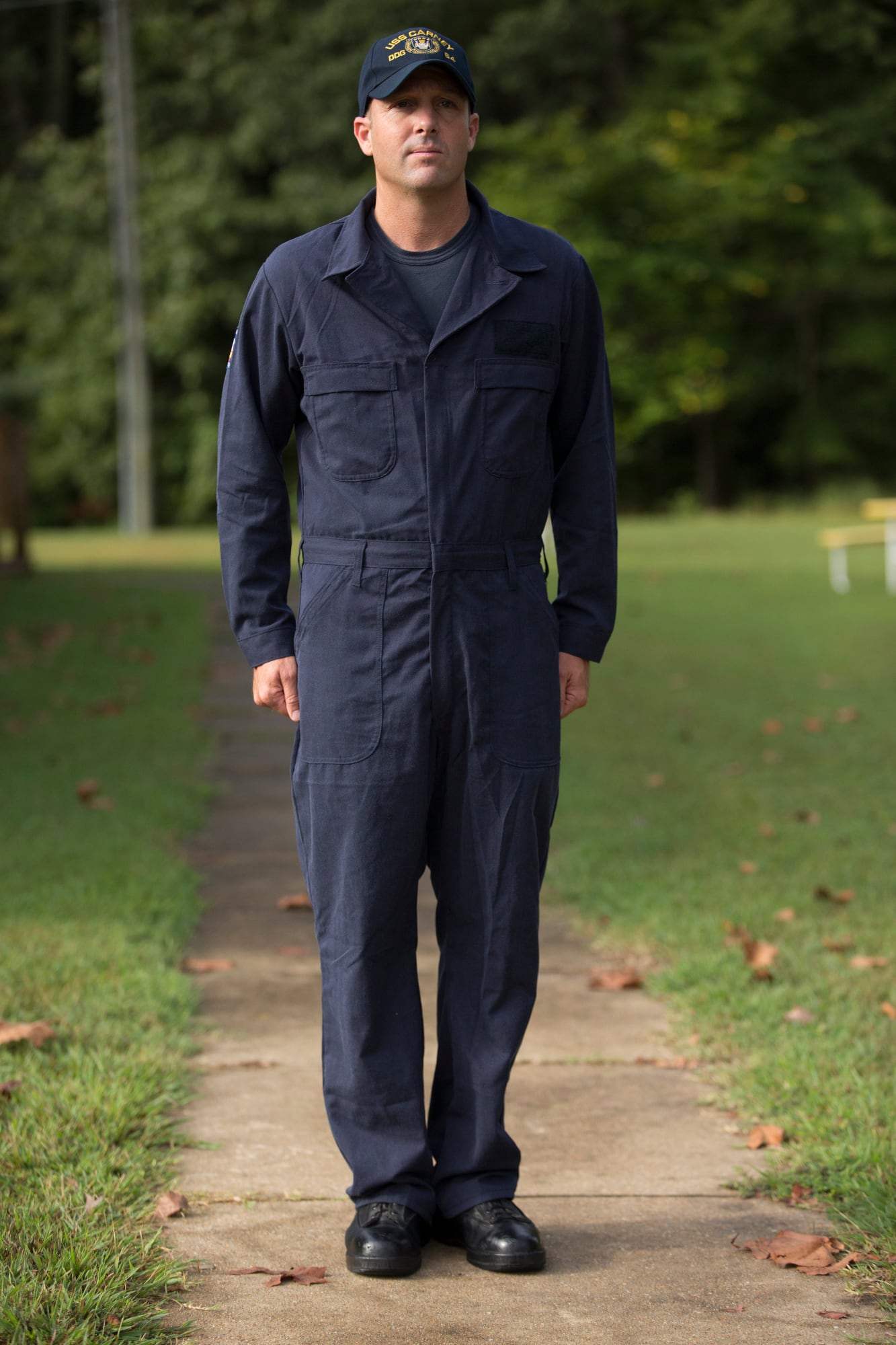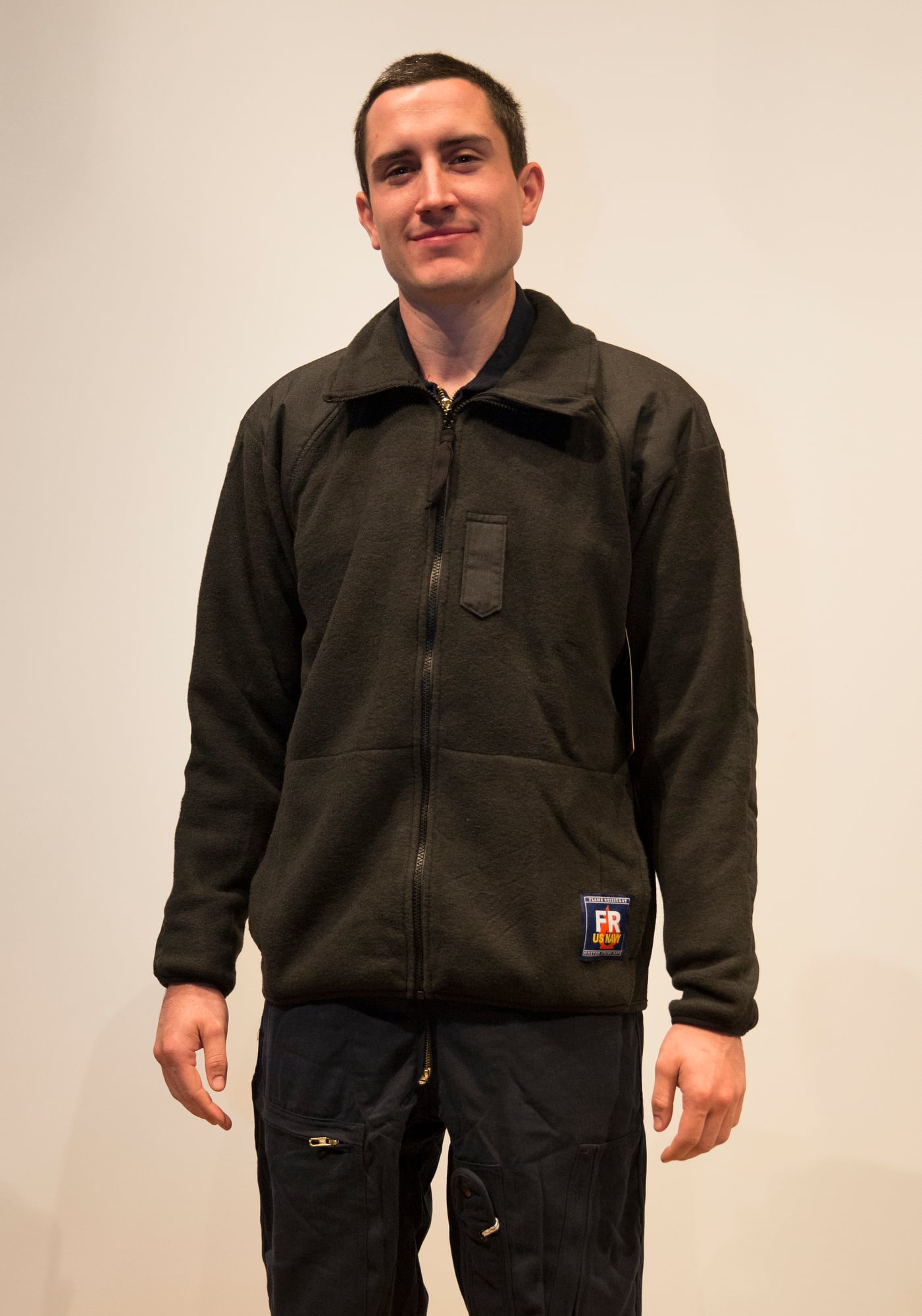Two new types of flame-resistant uniforms are being tested by fleet sailors Fleet Forces Command is testing two Improved Flame Resistant Coveralls that promise to fit better and last longer — and one prototype significantly boosts the cool factor.
It is a dark blue flight suit designed to be worn by deckplate sailors that officials hope fits better and lasts longer than the current flame-resistant variant of coveralls. The flight suit The utility version will be hard to spot; it is an exact replica of the current FRV. The second prototype is certain to stand out. It is a dark blue flight suit designed for deckplate use. It includes all of the pockets, torso zipper, and Velcro closures on the waist, wrists, and ankles that pilots and aircrewsfly boys have come to know and love.
"Yeah, I'm looking forward to seeing how that shapes up," said Machinist Mate 1stFirst Class (SW) Jonathan Griffith, one of the sailors participating in the wear test. "Because I don't have a centralized office, I usually carry a lot of items in my pockets — tools, papers, books — as I walk around throughout the day. Pockets would be a huge help."
If sailors like Griffith like the flight suit, then it's possible that fleet bosses will OK this for all sailors in coming years as part of a push to improve upon the FRV coverall that was fast-tracked to the fleet two years ago. Fleet Forces Command, which is leading the wear test of these organizational clothing items, is also having sailors try out an improved flame-resistant coverall as another option and a flame-resistant fleece to go over it or the flight suit. Organizational clothing is issued by a sailors' command, rather than issued at boot camp and maintained with a sailor's seabag allowance.
The What will hold up, officials said, is the new flame-resistant material is built to hold up — not only in a fire, but through the everyday rigors of shipboard life. The improved FRV prototypes use a tri-blend of flame-resistant fibers. They provide the same level of flame resistance as the FRV coverall now worn, but also protect against arc flash, an especially dangerous hazard when high voltage flashes through the air.
The new fabric is expected to be more durable than the current FRV, said Amy Brayshaw, research and development team leader with the Navy Clothing and Textile Research Facility in Natick, Massachusetts. Industry data suggests the fabrics are up to three times more durable than the treated cotton currently used, but "those might not have been tested in a shipboard environment. That's why we are doing this wear test, to quantify that."
Any improvement in durability is good news for sailors who have bemoaned the FRV coverall's lackluster lifespan since it was introduced in the fall of 2013. From staining and fading to rumples, rips and tears, it simply doesn't hold up.
Sailors, tired of rolling up their FRV sleeves and trouser legs, were also happy with the flight suit's more slimmeraccurate fit at a fitting session in mid-September. Others liked the way the flight suit hugs the body without being restrictive. Some sailors said they liked the fact that utility coverall is a little larger in the shoulders and more comfortable in the midsection. They said this fit would be a big benefit when maneuvering in tight spaces.
At the fitting, women tended to prefer were far more favorable toward the flight suit, which comes in designated men's and women's size. The FRV coverall is unisex and many women say it's not a good fit. Unlike the FRV's unisex design, which is not an easy fit for females, the flight suit comes in designated men's and women's sizes.

A command master chief from the USS Carney (DDG-64) demonstrates the new Improved Flame Resistant Variant coveralls at Naval Weapons Station Yorktown on Sept. 10 in Yorktown, Va.
Photo Credit: Mike Morones/Staff
The sailors will also test an improved version of the current FRV coverall, which officials hope will be more comfortable and better fitting.
The goal is to have sailors select the best fleet uniform that balances fire protection with comfort. In addition to adopting the flight suit or coverall design, there's also a possibility officials will opt for a new uniform that combines them. That could be something like a loose-fitting coverall with the secured zipper pockets of a flight suit, for example.
Officials acknowledged that the end result could be this type of hybrid of the two prototypes, a loose-fitting utility coverall with the flight suit's pockets, for example.
But the collar will have to be addressed if the Navy goes with the general flight suit design. The same rules that govern rank and insignia for the FRV are in play during the wear test. Sailors are allowed to use metal collar devices or they can, at their own expense, sew on rank insignia — a popular option, especially at sea. But wear test participants immediately noted that the flight suit's smaller, curved collar does not lend itself to rank insignia. Don't count on it being moved to the shoulders, that is officer country.
Insignia could be centered on the chest, but would then have to contend with the flight suit's torso zipper. Another option would be to show the sailor's rank on the Velcro-backed nametag. That may be a moot point. Many sailors doubted that the plastic zipper would hold up in a shipboard fire.
Because it makes little sense to cover a flame-resistant coverall with a jacket won't stand up to fire, participants will also test a dark blue version of the Army's flame-resistant fleece jacket to see if it can withstand shipboard life. The jacket was popular with sailors, but the flight suit is the attention-getter, especially for engineers and topsiders used to only seeing aircrews in those duds. Despite the jacket's initial popularity, the flight suit is the attention getter. In addition to its sleek, form-fitting look, sailors were enamored by its many secured pockets.
At the try-on, most said they were eager to try something new. CMDCM (SW) Jonathan Lonsdale, the top enlisted sailor aboard the destroyer Carney, said he stops sailors with torn or faded FRV coveralls "almost on a daily basis" and tells them to get a new uniform from supply.
"That gets frustrating," said Lonsdale, an electronics technician by trade. "I'm hoping the new IFRVs address that so we don't have those same issues."
Griffith agreed.
"As soon as I started wearing the current FRV's they started ripping," he said. "Any time I would catch them on something in the engineering plant, they would rip. The durability is unsatisfactory."
'Pretty comfortable'
Griffithn is one of 165 sailors aboard Carney that will put the prototypes to the test. His ship is headed to its new homeport in Rota, Spain, and is scheduled to go on patrol in the Mediterranean and possibly Black Sea in November. But not everyone on the ship gets to don the new duds. The weapons department was swinging ammo at Naval Weapons Station Yorktown when the IFRV was issued Sept. 10. Lonsdale admitted he is already dealing with some envy, as the crew is "pretty fired up" about the wear test.
At least 235 additional sailors aboard the amphibious assault ship Kearsarge and attack submarine Newport News will be outfitted prior to deployments scheduled for this fall. FFC wanted to test a wide variety of ship types, deployments lengths, and mission areas, officials said.
Each participant will receive four uniforms: two coveralls and two flight suits designs. Both uniforms use the same Velcro-backed leather or embroidered name tag above the left breast pocket, or embroidered unit-specific nametags similar to those worn on green Nomex flight jackets. Sailors and petty officers will wear a black web belt with the utility coverall, while chiefs and officers wear the khaki web belt. Everyone will wear the same covers, footwear, and undershirts currently authorized with the FRV.
The prototypes require the same laundry and care as the FRV. The IFRV maintained flame resistance through 50 shipboard launderings, Brayshaw said, but must be cleaned separate from non-flame resistant garments. Chlorine bleach and starch are not allowed.

A sailor from the USS Carney (DDG-64) tries on the new Improved Flame Resistant Variant fleece jacket at Naval Weapons Station Yorktown on Sept. 10 in Yorktown, Va.
Photo Credit: Mike Morones/Staff
The fleece jacket is authorized for daily wear on board ship while underway, though officials warn that paint, oils, and the like may compromise its flame-resistant performance. The jacket must be zippered at least three-quarters of the way when worn. Rank is placed on the center chest rank tab; the rank tab worn on the Navy working uniform parka may be used. Skippers have the discretion to authorize wear of the fleece jacket in port for appropriate shipboard activities such as in port steaming, fast cruise, drills, and evolutions, or ashore in environments that place an excessive amount of wear on working uniforms.
"The fleece is synonymous with the IFRV, so wherever we are allowing the sailors to wear the IFRV, we are going to allow them to wear the fleece," Lonsdale said.
Gas Turbine Systems Technician (Mechanical) 2ndSecond Class (SW) Evan Peterson thinks the fleece will be a good addition.
"The jacket is pretty comfortable, and down in the [central control station] its gets a little chilly," he said. Indeed, many ship compartments are rather brisk because computer systems must to be kept cool, and his ship could end up operating in the chilly North Atlantic.
Officials said they plan to eventually test a flame-resistant sweater, something akin to the olive-colored "sub sweater" that is a favorite among bubbleheads.
Wear test participants will provide evaluations at the midpoint and conclusion of their deployments. They will turn in the prototypes at the end of their float. Officials will do a final analysis of appearance, durability, staining, and odor and make recommendations by the end of fiscal '16. A subsequent wear test typically follows to test recommended changes. Contracts must then be drawn and vendors selected to build the inventory. All these steps ensure that most uniform design changes typically take Most uniform changes take between three and four years from concept to roll out.
Improvements in durability, serviceability, comfort, and appearance could equate to fewer uniforms in your seabag. Whatever version of the improved flame-resistant uniform the fleet picks, it will likely cost more; the treated cotton in current FRV coveralls is the least expensive of all flame-resistant materials. While better quality could mitigate higher costs in the long run, the longer wear life could mean sailors will be issued three IFRVs instead of the four FRVs they currently receive, Brayshaw said.
Pull outs
Velcro waist, ankle and wrist — The flight suit's waist, wrist, and ankle closures are different than the ill-fitting FRV you are used to. It's Velcro waist replaces belt loops, while the sleeves and legs provide an accurate fit.
Collar will be an issue — The flight suit's curved collar is too small to adequately hold rank insignia, sailors said.
Zippers raise question — Some sailors were concerned that the zippers would not hold up in a fire. This is especially problematic for the long torso zipper.
Secured pockets are a plus — The flight suit has a sleeve pocket and larger chest pockets. The thigh pockets are larger and easier to access than the coverall's front pockets. The leg pockets, which are larger than the coverall's hip pockets, are easier to access when seated or kneeling.
The FR patch — The prototypes are identifiable by an FR label. It is on the left sleeve of the utility coverall, the right sleeve of the flight suit coverall, and the lower left side of the fleece jacket.





